Specialists - Year 3 & 4 Week 4
Week beginning – 4 May 2020
If you want to see last week's Specialist pages again, click here.
P.E.
30-45 minutes per day
*Download the 60 Second Challenge Activity Tracking Sheet to track your progress! Click here
Monday
Warm-up
60 Second Challenge: Burpee Click here
Physical Scavenger Hunt
Find and touch all the common household items listed. When you find each item, touch it and check it off your list. Then perform the exercise that matches that item. Once you complete the exercise, you can move on to the next item. Time yourself and see how quickly you can complete the physical scavenger hunt challenge! Mr M completed this challenge in 10 minutes. Can you beat his score? Click here to access the challenge sheet and exercises!
Tuesday
Warm-up
60 Second Challenge: Air Balloon Click here
Fitness Challenge
Try and perform each of the following exercises to accumulate points. You can play against someone else or you can try and get your own high score! Keep track and play as many times as you can to set a high score.
Mr M’s best score is 10, can you beat his? Mrs Yue-Lambs' best score is 13, can you beat hers?
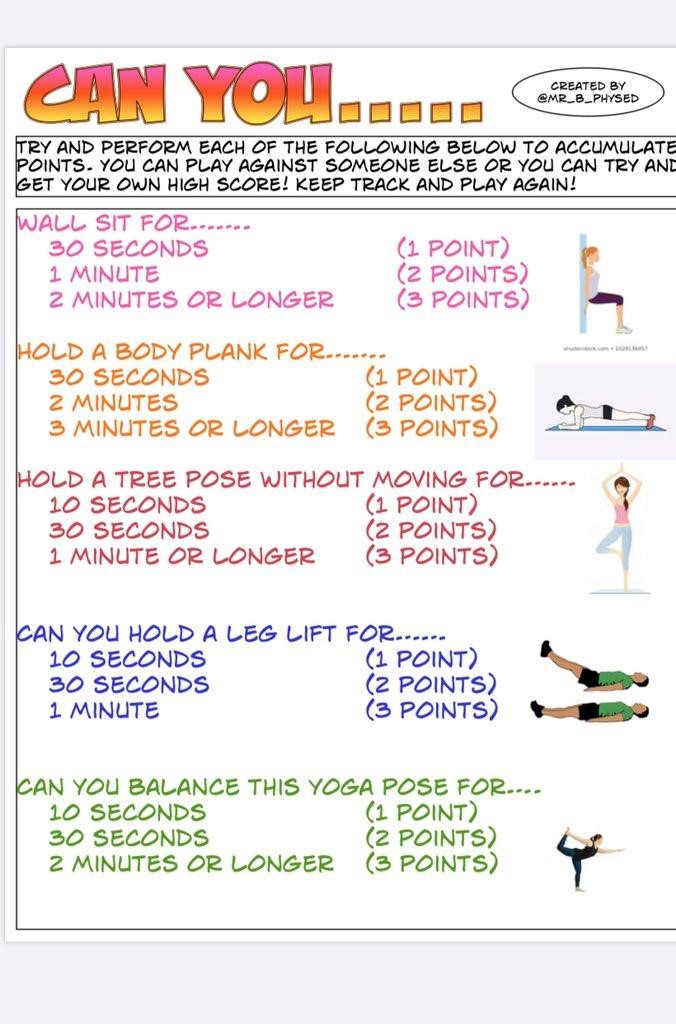
Wednesday
Warm-up
60 Second Challenge: Around the World Click here
Not in my backyard
Steps: Place a skipping rope, towel or string on the floor. Spread soft toys or bundled socks all over the playing space (on one side of the rope) as the ‘rubbish’. On the signal “READY, SET, GO!” throw each piece of rubbish across to the other side of the rope ('out of your yard'). Use a stopwatch to time how long it takes to get all items across the line. If there is a second person you can play with (a brother or sister), then they will be on the other side of the rope and the game becomes a “battle” to see who can throw the most rubbish into their neighbour’s yard. You can use an iPad to film throwing technique – based on correct overhand and underarm throwing what feedback can you give yourself to improve technique?
Questions: When you were rushing, what happened to your technique? Do you think people rush when playing team sports? If so, what makes them rush?
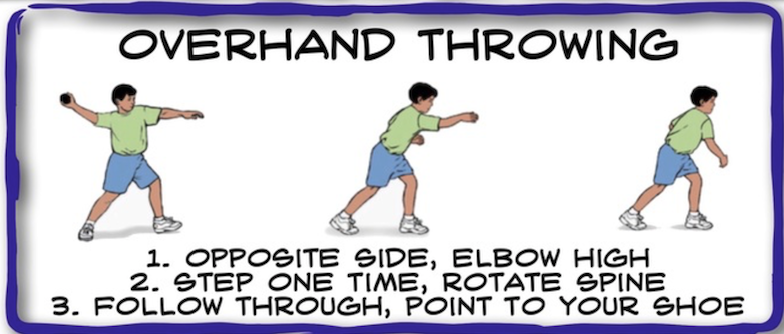
Thursday
Warm-up
60 Second Challenge: Bean Bag Throw Click here
Wall Ball
Steps: You will need a rubber ball (high bounce ball) or a tennis ball for this activity. Rebound the ball off a brick wall, the ground and then catch - repeat 5 times in a row. After you catch the ball 5 times in a row, try some of these variations:
- Rebound the ball up and clap 1,2,3 or more times – what is your best score?
- Rebound the ball, turn around and catch
- Rebound the ball, touch the ground with one hand, stand up and catch
- Try with your right hand, left hand, both hands
- What other tricks can you come up with for catching – can you teach someone else in your home?
- Can you turn this into a game that includes scoring?
Questions: What part of your hand do you catch with? What was your best score for clapping your hands when you threw the ball in the air? Mr M can throw a ball up in the air and clap 15 times before catching. Can you beat his score? Mrs Yue-Lambs’ best score is 12, can you beat her score? What was your favourite catching trick?
Friday
Warm-up
60 Second Challenge: Bunny Jumps Click here
Balancing
Today we are going to learn how to balance. Balancing is a great way to practise being a professional ballerina, ninja or statue. Find a safe space inside or outside your house. Complete the following balancing challenges. What will you aim to be? Perhaps you will be a ballerina, ninja or spy? Click here to access your daily balancing challenges. Do you have what it takes to be a master of balance?
Spanish
30 minutes per week
Create your own road sign in Spanish
Think back to the activity we completed last term where we looked at different road signs. We identified the cognates in each road sign.
This week, choose some of the following words to create an original road sign. It can include text and pictures. Remember that we found that it was much easier to determine the meaning of a road sign if it had pictures, even if we couldn’t understand the words!
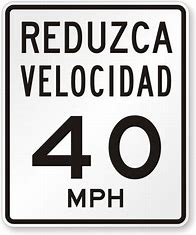
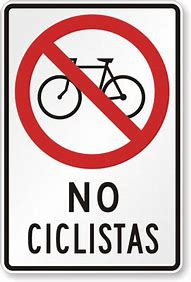
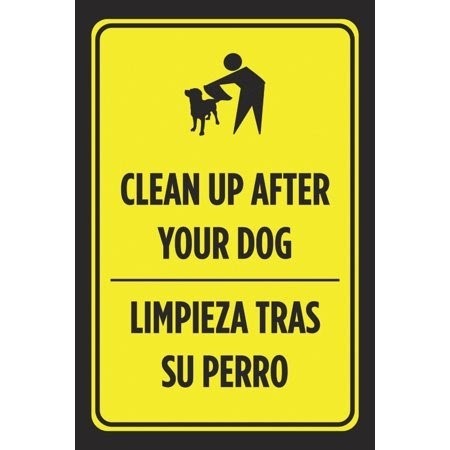
Consider the following: Where is your road sign located? Is it designed for safety reasons or to warn people? Why is it needed? What shape will it be? Is it specific to a Hispanic country or can it be used internationally?
- No entry- No entre
- Stop - Para or alto
- No trespassing- Prohibido trespasar
- Beware/Careful- Cuidado
- Vehicles- Vehiculos
- Danger- Peligro
- No parking- Prohibido estacionar
- Reduce speed- Reduzca velocidad
- Maximum- Maxima
- Children playing- Niños jugando
- Animal crossing- Cruce de animales
- Do not pass- No pasar
Music
60 minutes per week
The activities you have been doing over the past few weeks will help you with your lessons from this week on. You will need the instrument you made from week 2, and your poster from week 3.
Listen to this piece of music called 'Hoe-Down' composed by Aaron Copland: Click here
A Hoedown is a lively dance that comes from America, usually associated with the south. This song is the last song in a ballet about cowboys and a cowgirl.
Listen to the piece of music and play the beat with the instruments you created a couple of weeks ago. Try and play the rhythms you hear repeated in the song (year 4, can you hear any ti-tikas?).
A piece of music is made up of different sections - we sometimes hear those sections repeated, or some are completely different from others. When we look at the different sections, we are looking at something called the form. Year 4, you learnt about this last year when we studied 'The Planets'.
This song is in Ternary form (ABA). We hear the A section of the song twice. This Ternary form song has a couple of sections added: an introduction and a coda (a short piece of music put onto the end of a song). Can you write down the times you hear each of the sections and write/draw what you hear in each (instruments, dynamics, tempo)? Use the outline below to help you set this
Introduction:
A section:
B section:
A section:
Coda:
If you get really stuck, a simple example of what you are creating is available in the Year 1 and 2 Specialist section of LFH. It's called a Listening Map.
Extension for students who play an instrument:
Those of you who would like to learn how to play part of music to Hoe-Down, you can download or view the sheet music for your instrument from the following website: Click here
There are different levels for your instrument.
Art
60 minutes per week
Greek Pots (this lesson will take 2 weeks)
Greek key is an ancient design, made up of a long, continuous line that repeatedly folds back on itself. It is believed that the motif symbolises a river, infinity or the eternal flow of things. This design was used in its various forms for decoration on ancient Greek pottery. Practise drawing this pattern continuously on a scrap of paper or in your book.
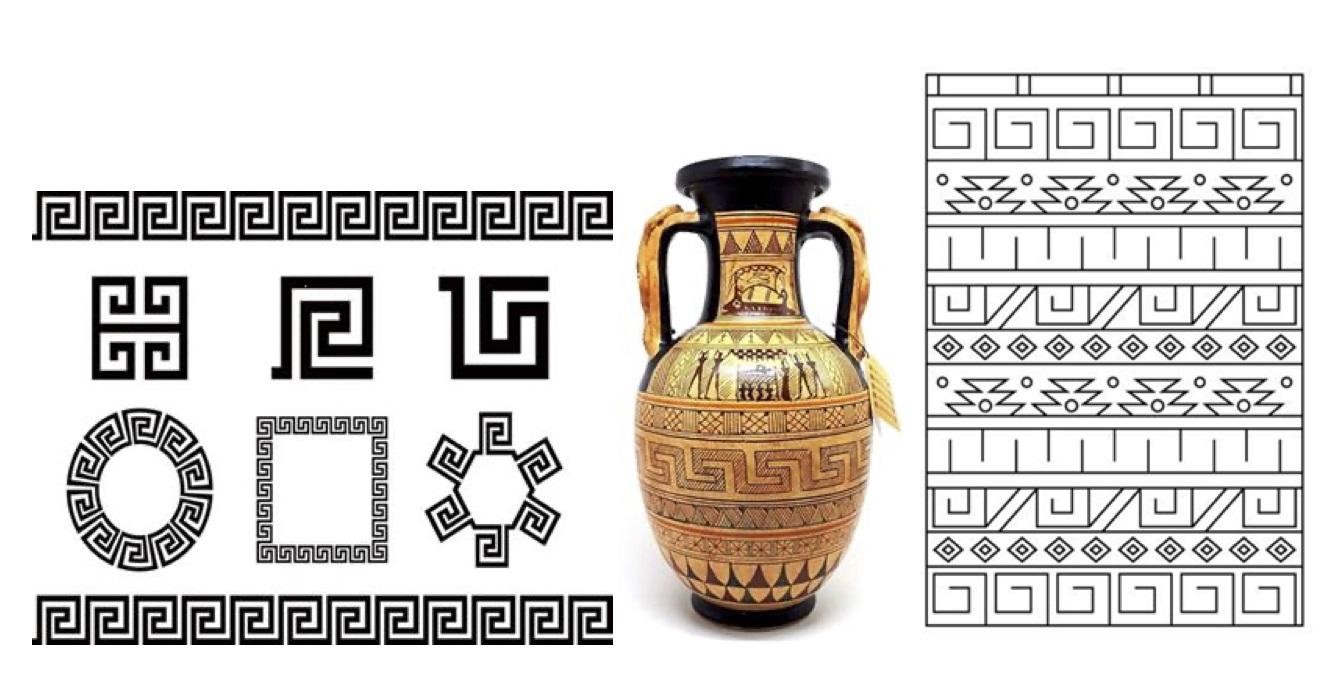
Have a look at some ancient Greek or Hellenic pottery if you can. The middle or top circumference of the pottery was sometimes used to illustrate characters from a story.
Make your own two dimensional Greek pot.
You will need a large piece of paper and cardboard (A3 if possible), a lead pencil, different sized black markers and coloured pencils ranging from red brown to gold. If you don’t have these exact things at home, find something as close as you can so you can do the activity. You can even draw straight onto some cardboard if necessary.
- Select a pot shape from the diagram below and draw it as large as you can on your page.
- Draw some gently contoured rows of different widths across the pot with your pencil. Fill in these rows with the key pattern and other Greek patterns. Perhaps you might do a sequence of images or characters that tell a story.
- Go over your drawing with a black marker (remember to choose the right size for the job and use a larger marker for colouring in larger areas).
- Then colour in using your red brown and gold pencils.
Display
Cut around the edges of your pot, trace onto some firm cardboard and cut the cardboard into the same shape. Glue your drawing to the cardboard then fold and glue a piece of card at the back so it will stand up. Take a photo!
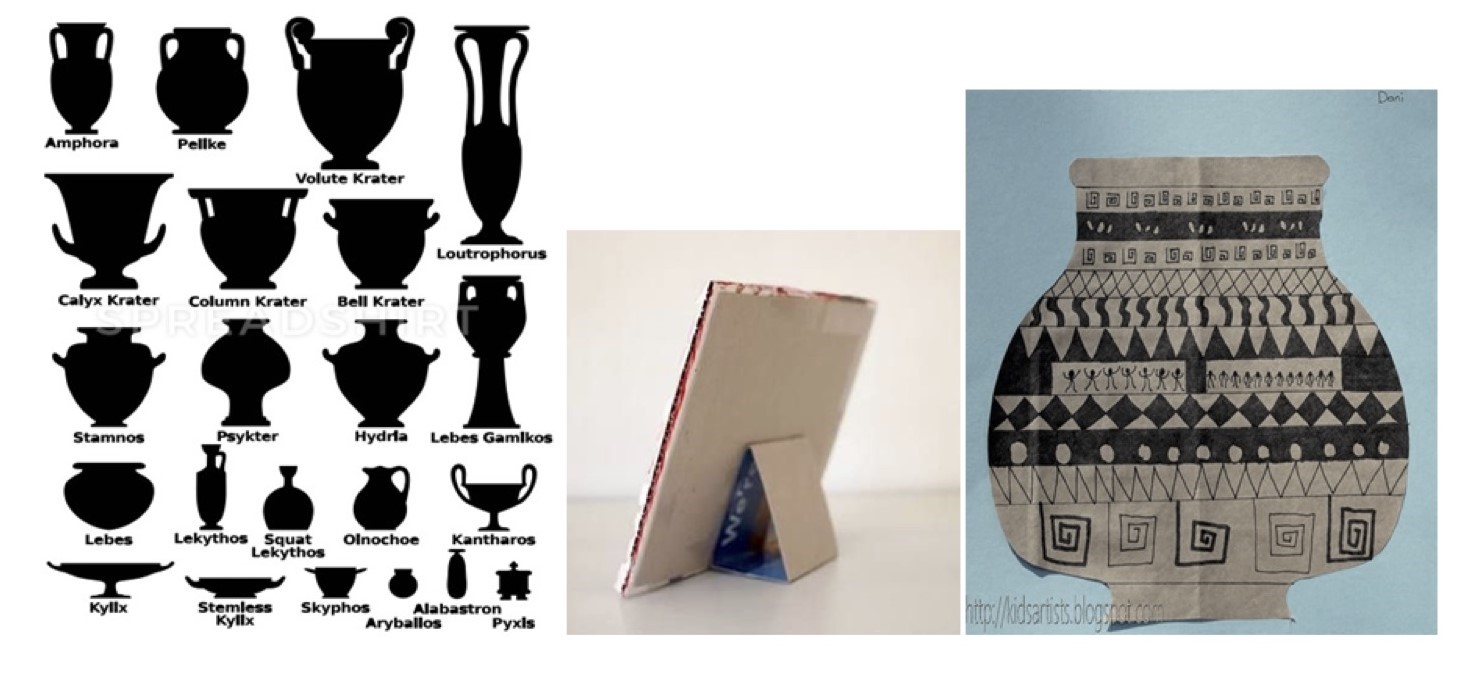
Use a dictionary and look up the following words. Write the definitions in your book or on a page with your name and class:
- motif
- linear
- contoured
- meander
- circumference
- Hellenic
Below are a couple of links to competitions and Art Prizes for Learning from Home. You can be part of a community of students for creating, contributing and connecting from home.
Library
30 minutes per week
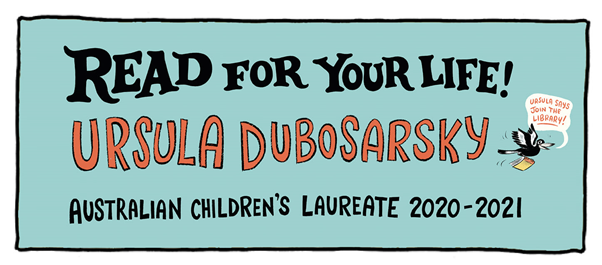
One of LPS favourite authors Ursula Dubosarsky has been chosen as the 2020 Australian Children’s Laureate.
The Children’s Laureate is a well-known Australian author who is chosen to travel around Australia – and even the world – talking to children and adults about the importance of BOOKS, READING and LIBRARIES.
To learn about Ursula’s experience as this year’s laureate Click here
To listen to the story ‘The Deep End’ by Ursula Dubosarsky on Story Box Library: Click here
Do you know any previous Children’s Laureates?
Hint: One of them writes about a chicken, and visited our school a few years ago.
Optional: Each month Ursula Dubosarsky uploads a writing page on ‘The Australian Children’s Laureate’ website. If you would like to read her month of April page and learn about writing a play Click here
© Copyright Laburnum Primary School
